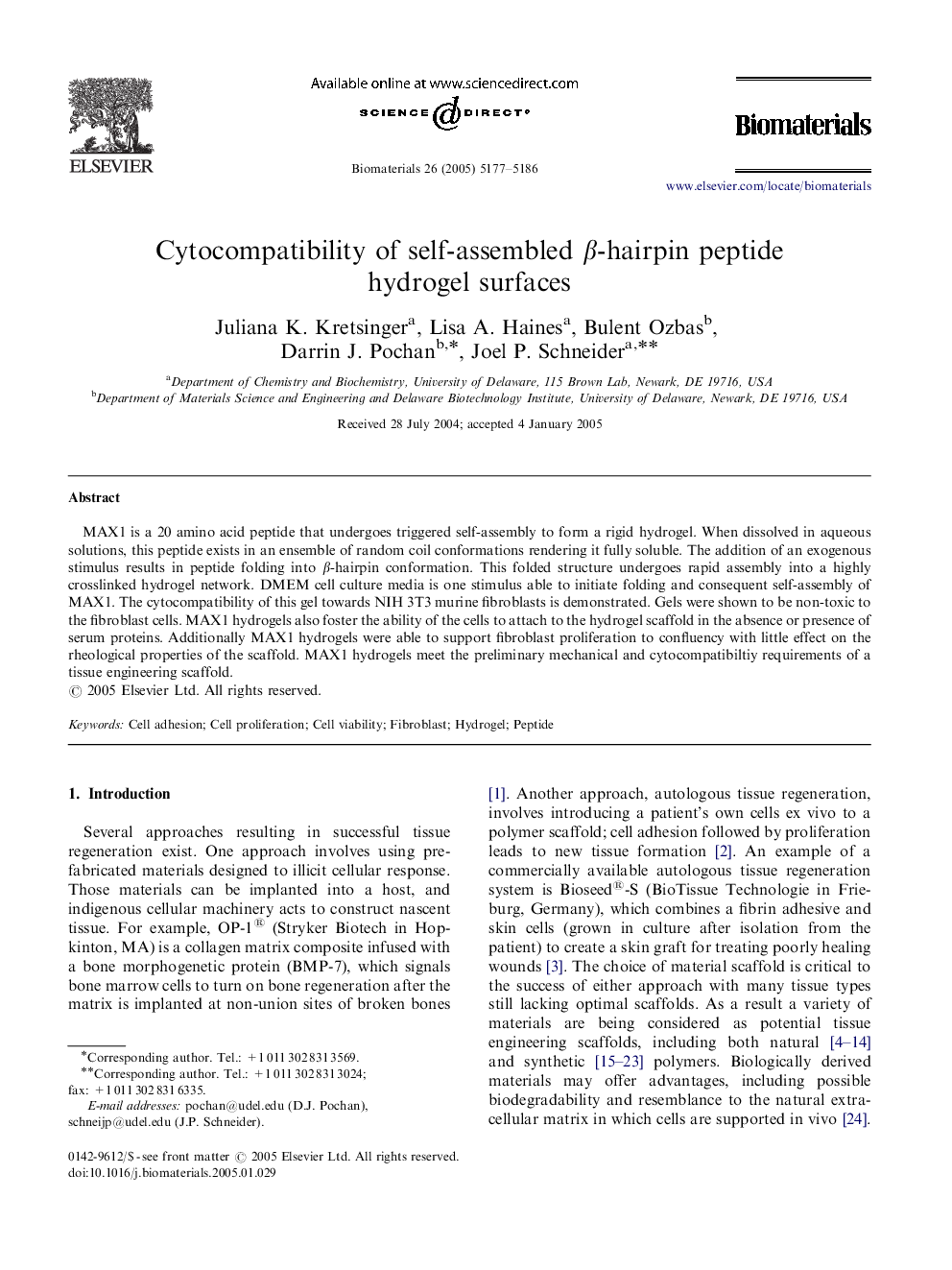| Article ID | Journal | Published Year | Pages | File Type |
|---|---|---|---|---|
| 12316 | Biomaterials | 2005 | 10 Pages |
MAX1 is a 20 amino acid peptide that undergoes triggered self-assembly to form a rigid hydrogel. When dissolved in aqueous solutions, this peptide exists in an ensemble of random coil conformations rendering it fully soluble. The addition of an exogenous stimulus results in peptide folding into β-hairpin conformation. This folded structure undergoes rapid assembly into a highly crosslinked hydrogel network. DMEM cell culture media is one stimulus able to initiate folding and consequent self-assembly of MAX1. The cytocompatibility of this gel towards NIH 3T3 murine fibroblasts is demonstrated. Gels were shown to be non-toxic to the fibroblast cells. MAX1 hydrogels also foster the ability of the cells to attach to the hydrogel scaffold in the absence or presence of serum proteins. Additionally MAX1 hydrogels were able to support fibroblast proliferation to confluency with little effect on the rheological properties of the scaffold. MAX1 hydrogels meet the preliminary mechanical and cytocompatibiltiy requirements of a tissue engineering scaffold.
